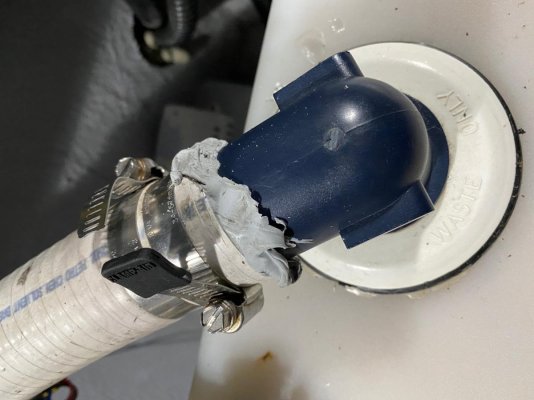Frank60
Veteran Member
- Joined
- Mar 16, 2020
- Messages
- 56
- Location
- United States
- Vessel Name
- About Time
- Vessel Make
- Meridian 368
I'm in the process of changing my sanitary hoses as they've started to smell. The hoses on the pump out have some kind of sealant on them. I'm guessing this isn't original but added by a PO trying to eliminate odor. The sealant is grey and rubbery. Its pretty tough stuff. Way more dense than silicone. I couldn't break off a piece with my hand.
Before I attempt to take these apart and maybe get myself into a real mess having to replace all of the fittings, I thought I'd see if anyone has a guess on what this stuff is and how best to deal with it.
I'm not adverse to replacing the fittings if that's ultimately the easiest way to go, but I'll have to figure out where to get the fitting that goes into the tank. The other fittings look like standard PVC fittings.

Before I attempt to take these apart and maybe get myself into a real mess having to replace all of the fittings, I thought I'd see if anyone has a guess on what this stuff is and how best to deal with it.
I'm not adverse to replacing the fittings if that's ultimately the easiest way to go, but I'll have to figure out where to get the fitting that goes into the tank. The other fittings look like standard PVC fittings.

